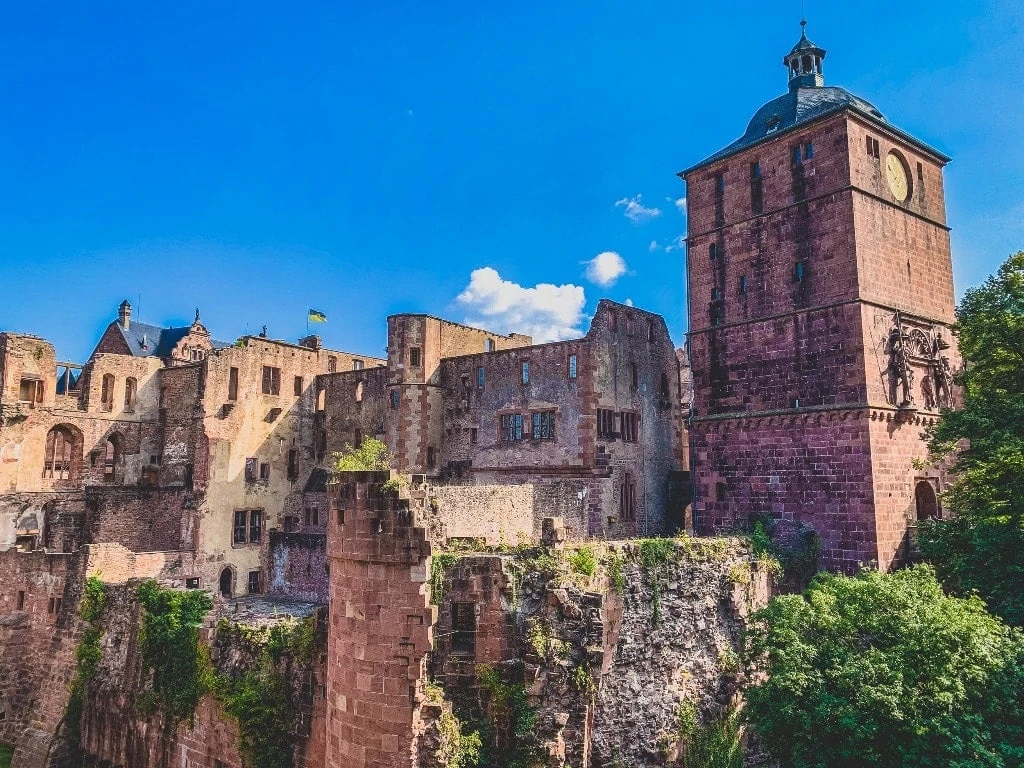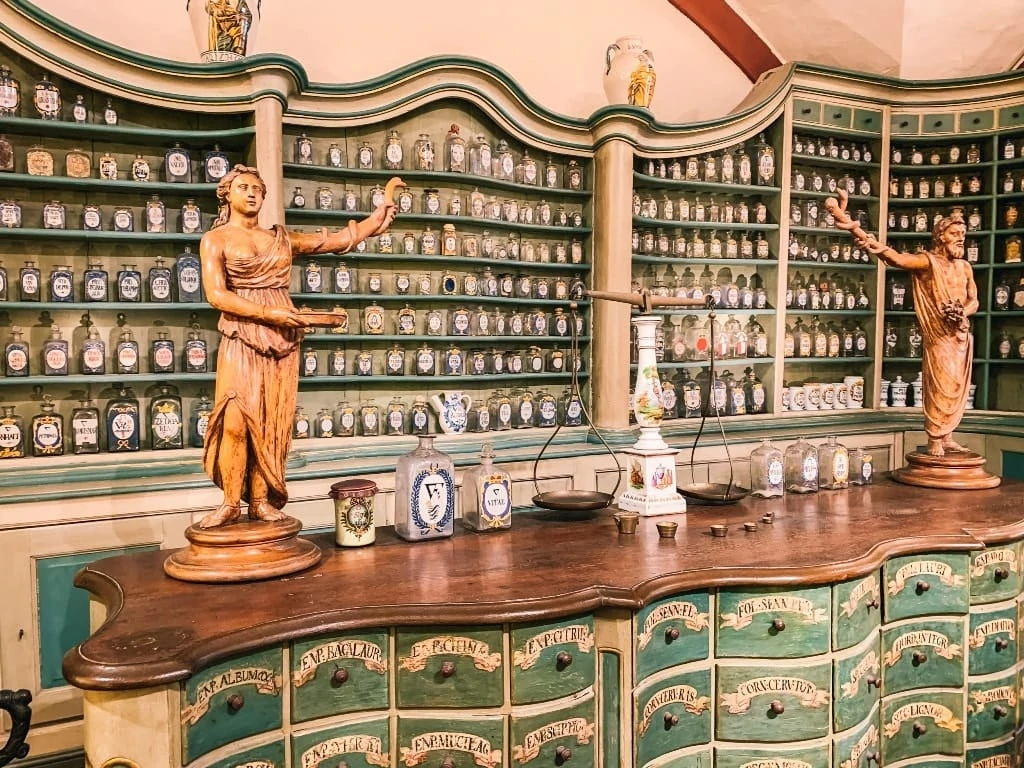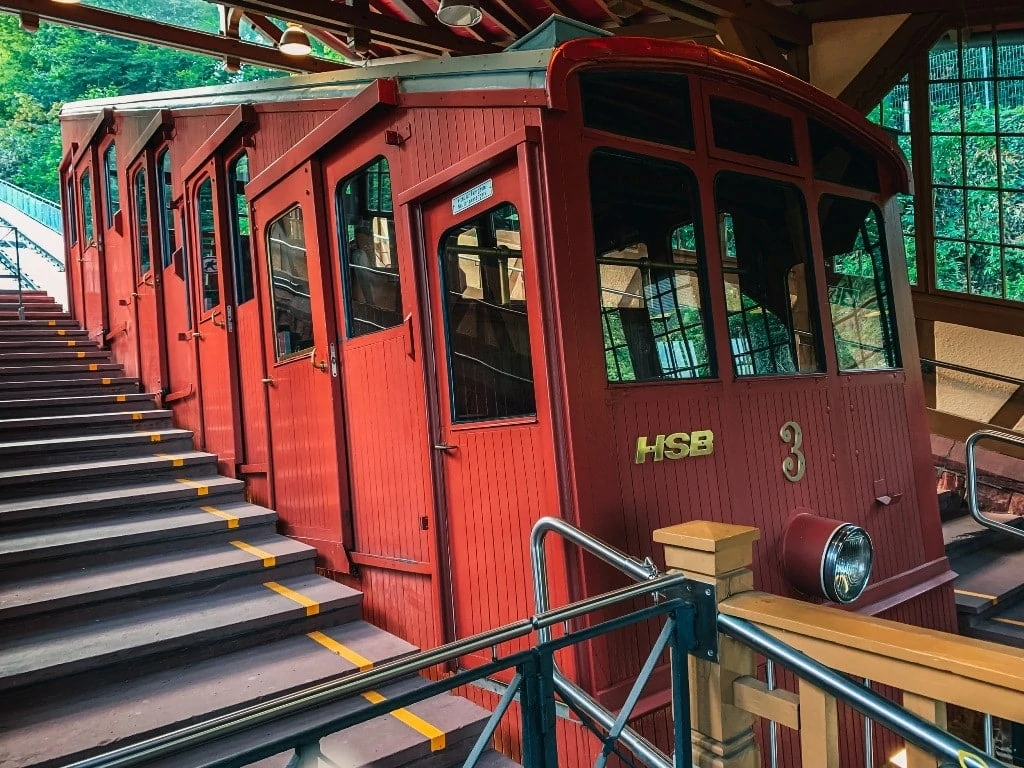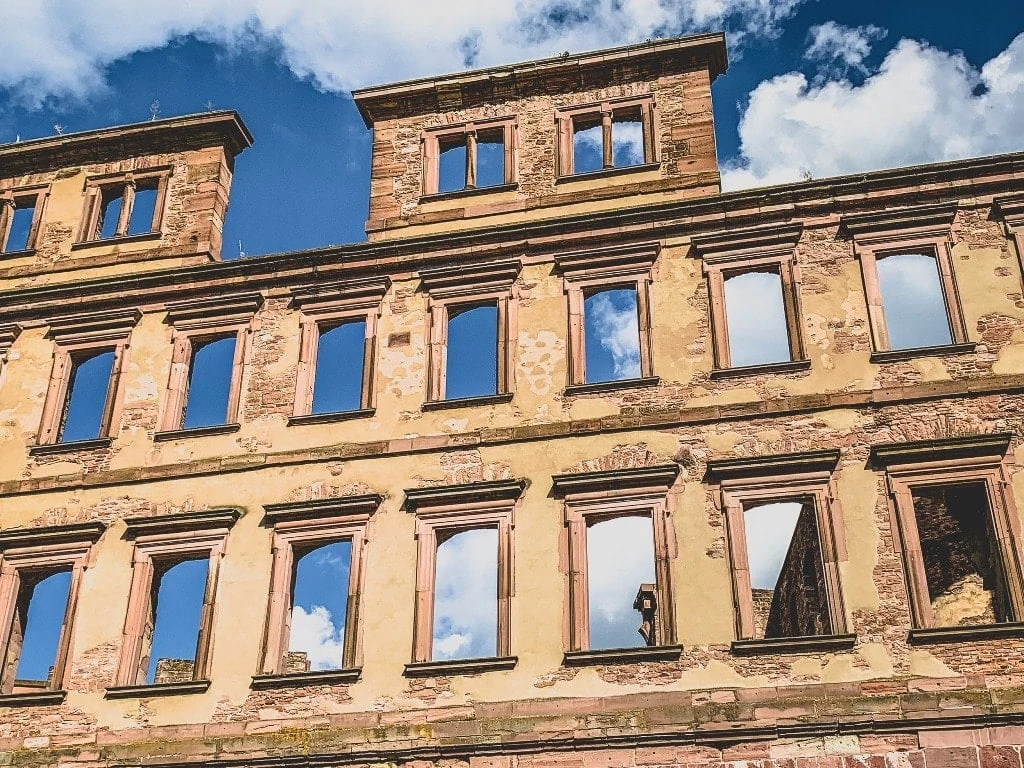A guest post by Sharon Odegaard of Exploring Our World
Iconic Heidelberg Castle, high above the banks of the Neckar River in Germany, keeps watching on the town of Old Heidelberg spread out below. The sprawling red sandstone castle dates to the 13th century and once was one of the grandest palaces of Europe.
Set on a hill covered in green forest, the castle today invites visitors to wander through the roofless walls and the gardens. Only a small middle section of the castle is restored to its earlier splendour, giving a glimpse into life during the Renaissance. The castle offers so much to explore.
A Guide to Heidelberg Castle
History of Heidelberg Castle

A collection of buildings constructed by prince electors of the Rhine grew up to form what became Heidelberg Palace. Each faces the central courtyard, and all of the buildings are fine examples of period architecture. The castle became known as the “eighth wonder of the world.”
French forces attacked the castle late in the 16th century. The castle’s destruction is commemorated with a fireworks display several times a year. After a few repairs in the 1700s, nature struck in the form of lightning. The castle caught on fire and lay in ruins.
Germans disputed whether to restore any areas of the castle. After much debate, a decision was reached. The castle would be preserved as a ruin rather than be restored, except for the Fredrich building.
Highlights of Heidelberg Castle

When you arrive at Heidelberg Castle, you will enter the grounds through a stone arch. Built in 1615, the arch was a birthday present from Prince Fredrich V for his wife, Elisabeth Stuart.
Stroll through the ruins when you veer left. The paths lead along the edges of crumbling buildings, deep crevices of greenery, and stone walls.
When you’ve seen your fill of the ruins, go back to the entrance and go right. This will take you to the entrance of the main courtyard.
Sign up for a tour in English. Your guide will take you through some of the buildings and tell you stories about the castle. The most fascinating portion of the tour takes you into the Fredrich Building at the back of the courtyard. This is the one section that is restored to its former glory.
The interior burned completely, but German artists recreated it in lavish Renaissance style, with ornamented wooden ceilings, stained glass windows, period flooring, and a hall of sculptures. Travel back in time and imagine what it was like to live here and walk these elegant halls.
As you stroll through the courtyard of the castle, notice the many fascinating details. A sun dial sits high on the outside wall of the Fredrich Building. And you’ll spy sculptures decorating the building exteriors, including some that survived the Middle Ages.
After the tour, be sure to visit the German Apothecary Museum, which has been housed in the castle since the 1950s. On display are preserved interiors of historic apothecaries from the 17th through 19th centuries. Medicines from different times make a fascinating exhibit.

The healing powers of nature were used in the Middle Ages and Early Modern Age. For example, in the 16th century, the pulverized mummy was used as a remedy for coughs, sore throats, broken hearts, shivers, and headaches.
A must-see at the castle is the Heidelberg Tun, known as the largest wine barrel in the world. Built in 1751, the giant barrel held wine donated in lieu of money for taxes. It was seldom full, but just the sight of it is astounding. Stop for the obligatory photo with the barrel, then take the stairs to view it from above. Parties and dances are sometimes held in this festive part of the castle.
If you’re hungry after all your exploring, grab a tasty lunch in the small café next to the Apothecary Museum. Be sure to take a look at the old brick oven inside, which is probably not like any pizza oven you’ve seen before.
Getting There Is Fun on the Funicular

From the Kornmarket Square in Old Heidelberg, a funicular station is right around the corner. The funicular whisks you up the steep hill to the castle. You can walk up, but the funicular is fun to ride. You can go directly to the castle or change cars and ride to the top of the hill.
At the top, about 2,000 feet above the town, a small viewing area allows you to see across the Rhine lowlands as far as the Palatinate wine route. The iconic Medieval bridge across the Neckar River and the old town lay far below.
Then ride back down to castle level. After exploring the castle, you can walk down the hill back to the old town in about 15 minutes.
Tickets to the castle level include entrance to the castle and grounds and are 8 euro. Tickets to the top of the mountain and back to castle level also include entrance and are 9 euro. The Funicular opens at 9:00 a.m.
For information about the Mountain Railway and options to ride, visit the website. You can ride up to the top of the hill either before or after your castle tour.
Practical Information on Visiting Heidelberg Castle

Heidelberg Castle opens at 8:00 p.m. and closes at 6:00 p.m. on most days. Tours are given at various times depending on the season. For more information about hours and tickets, visit the Heidelberg Castle website.
A small café is just outside the entrance. You can pick up a coffee or a quick lunch here.
American author Mark Twain, enamoured with Heidelberg, wrote of the castle: “A ruin must be rightly situated, to be effective. This one could not have been better placed.
It stands upon a commanding elevation, it is buried in green woods, there is no level ground about it, but, on the contrary, there are wooded terraces upon terraces, and one looks down through shining leaves into profound chasms and abysses where twilight reigns and the sun cannot intrude. Nature knows how to garnish a ruin to get the best effect.”
Allow at least a half day at this romantic ruin. Gaze at once was an elegant home and a strong fortress. See how time and nature have worn down the castle into a beautiful place full of echoes of past glory. You’ll long remember your visit to Heidelberg Castle.
